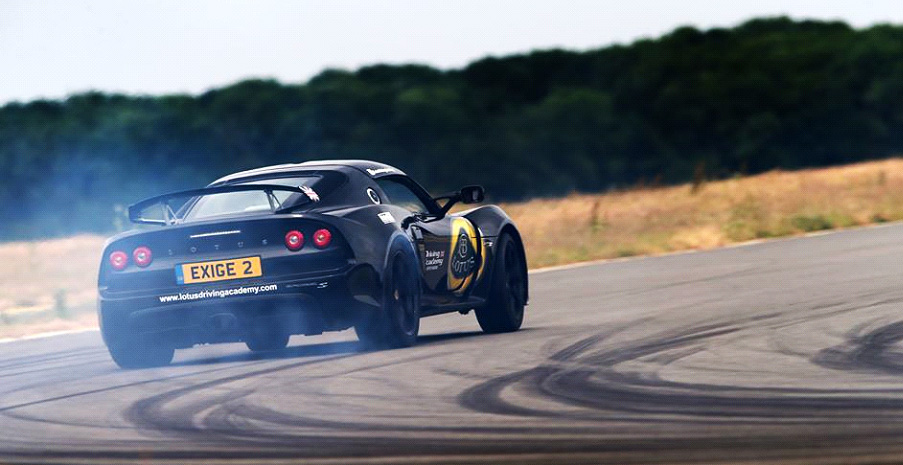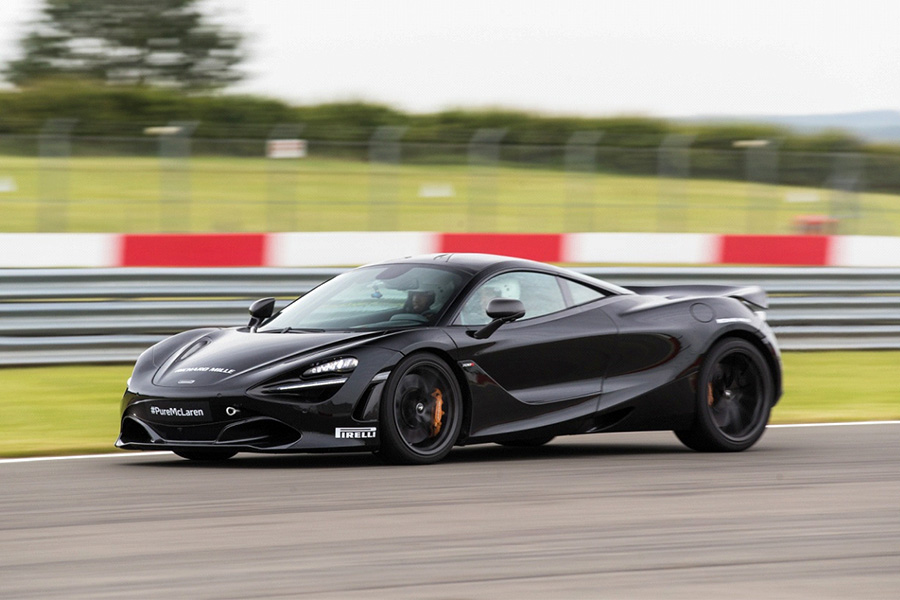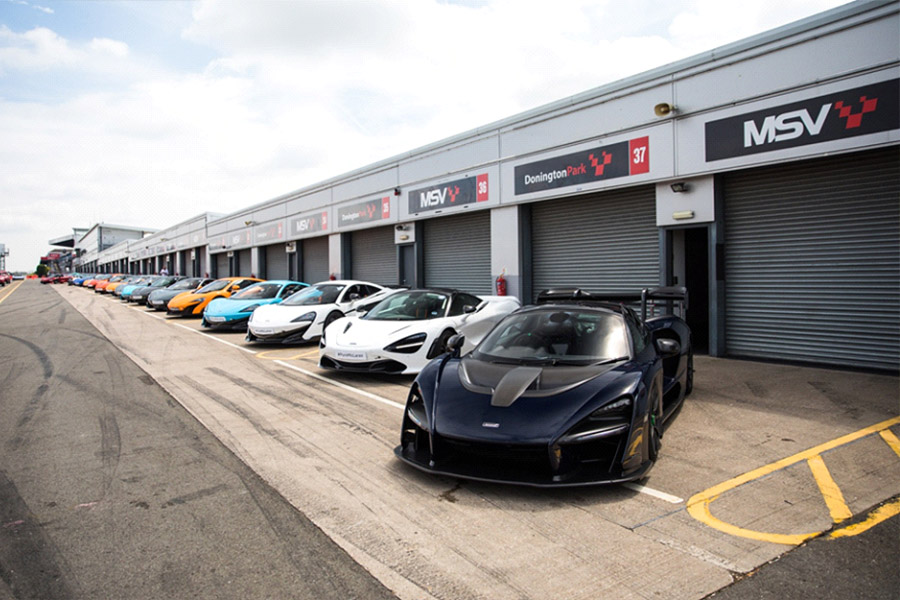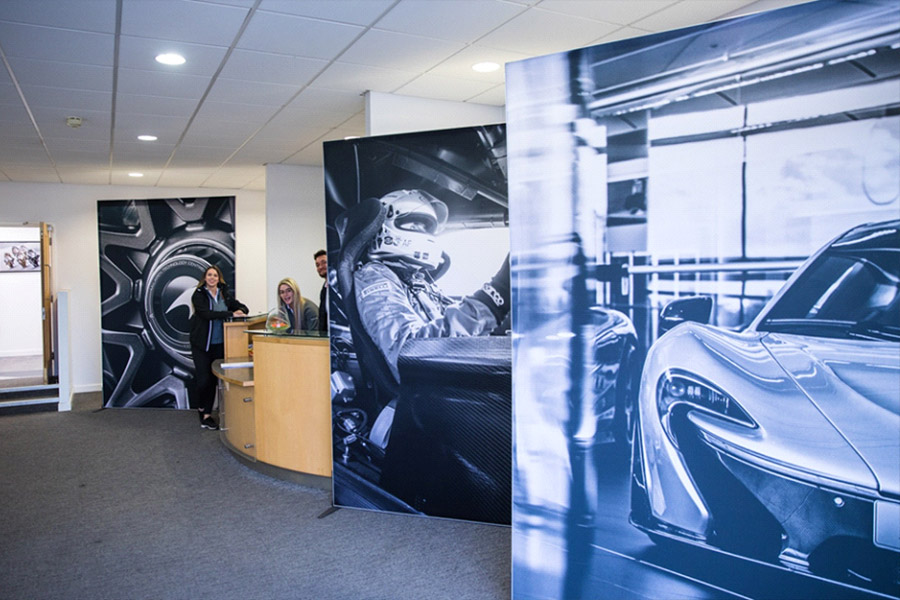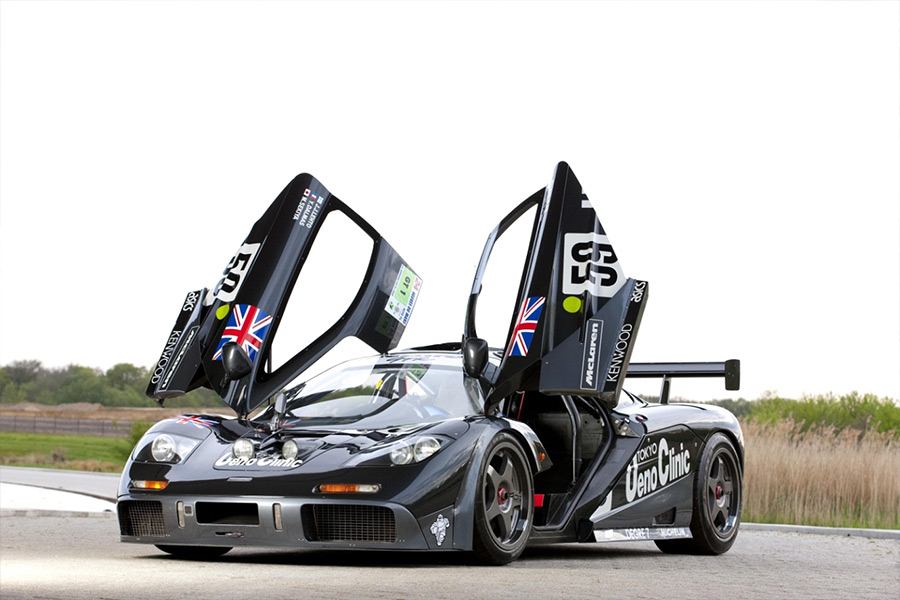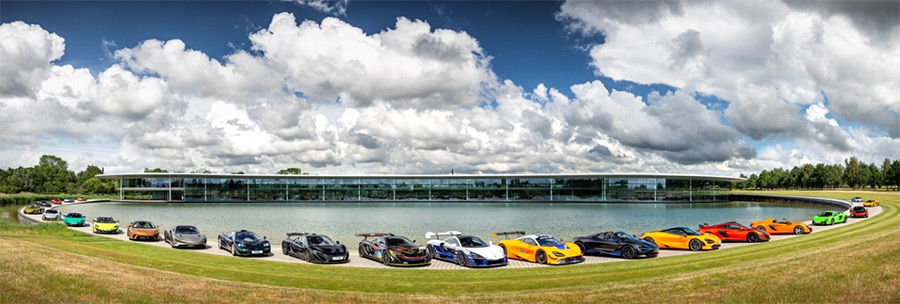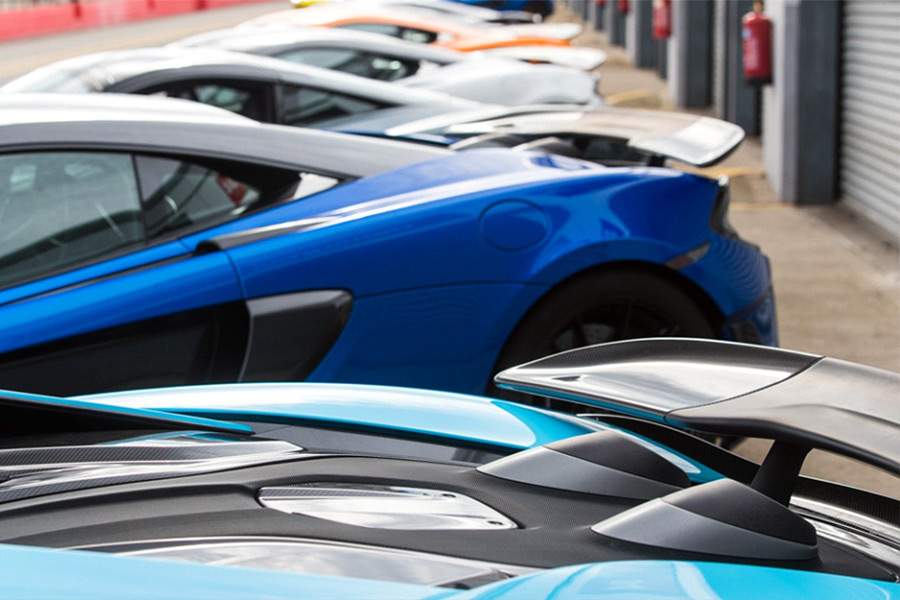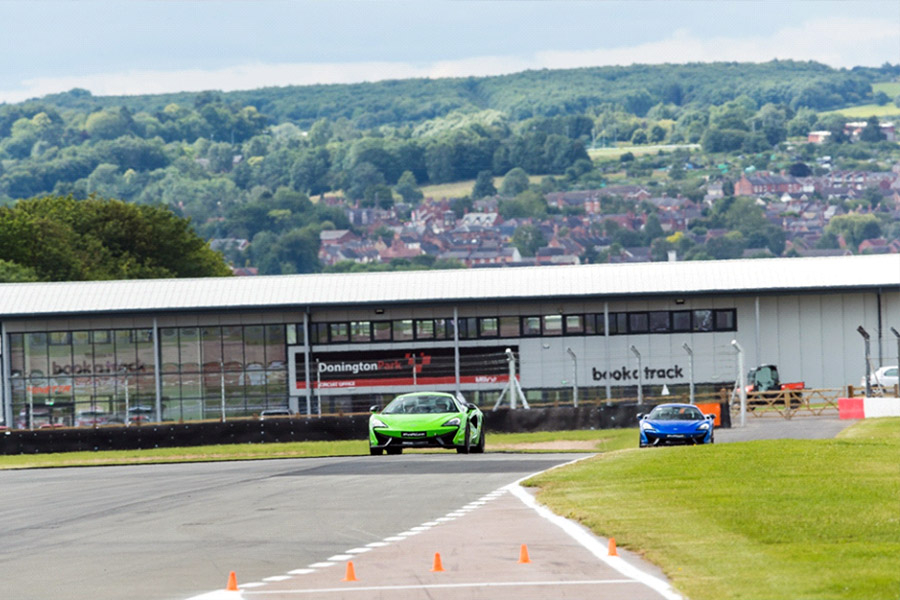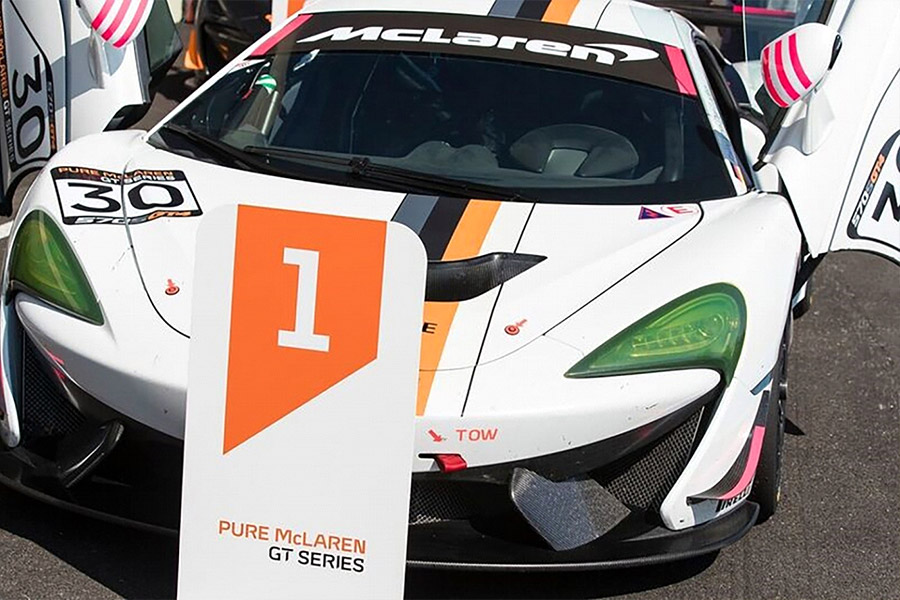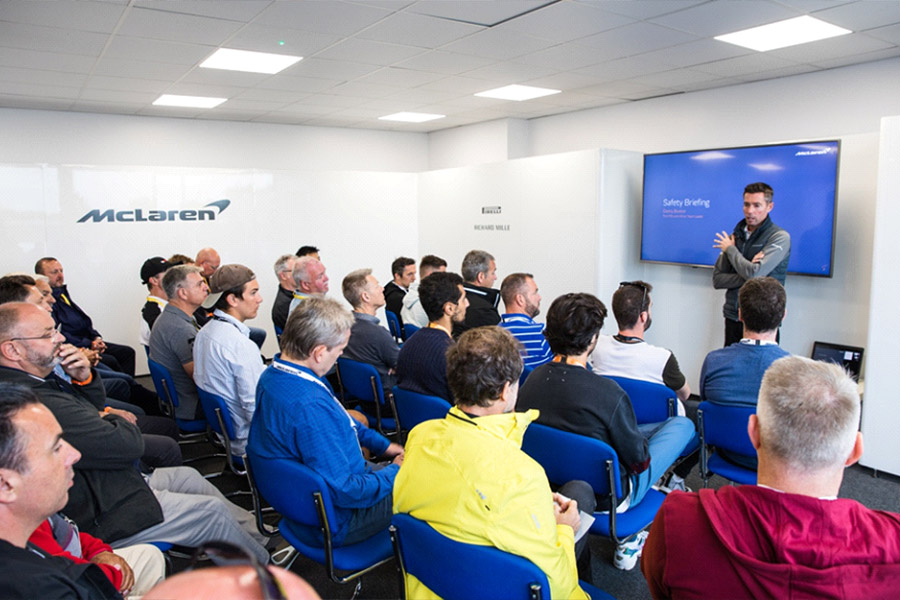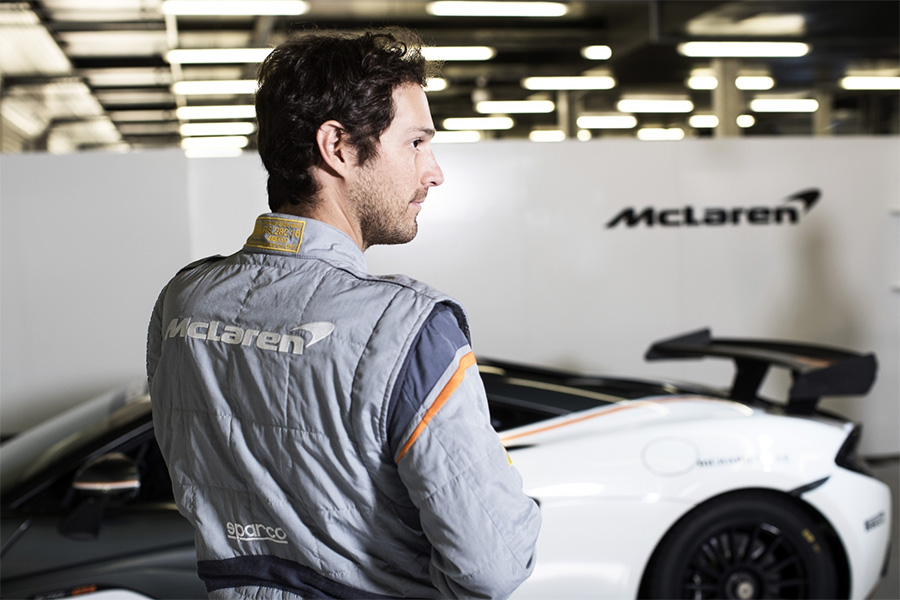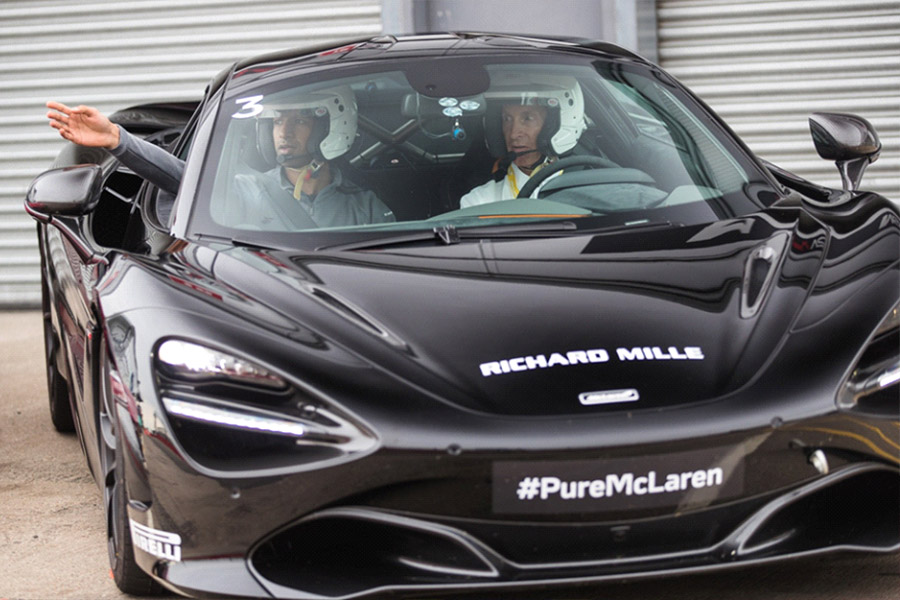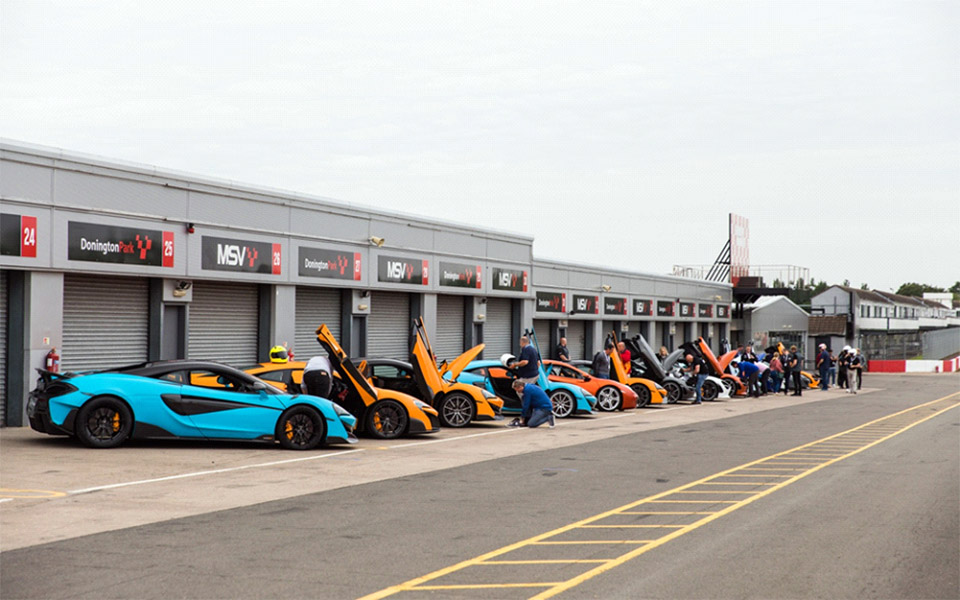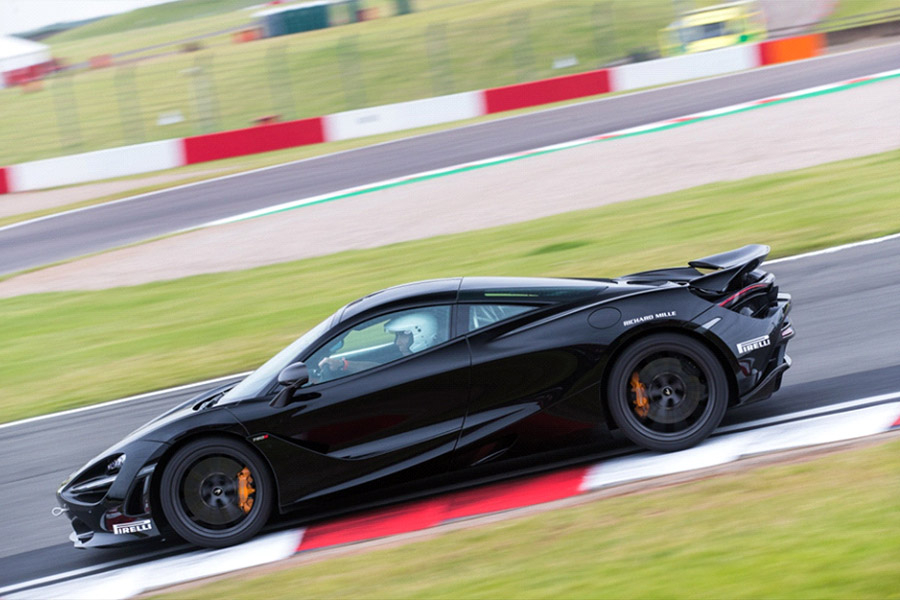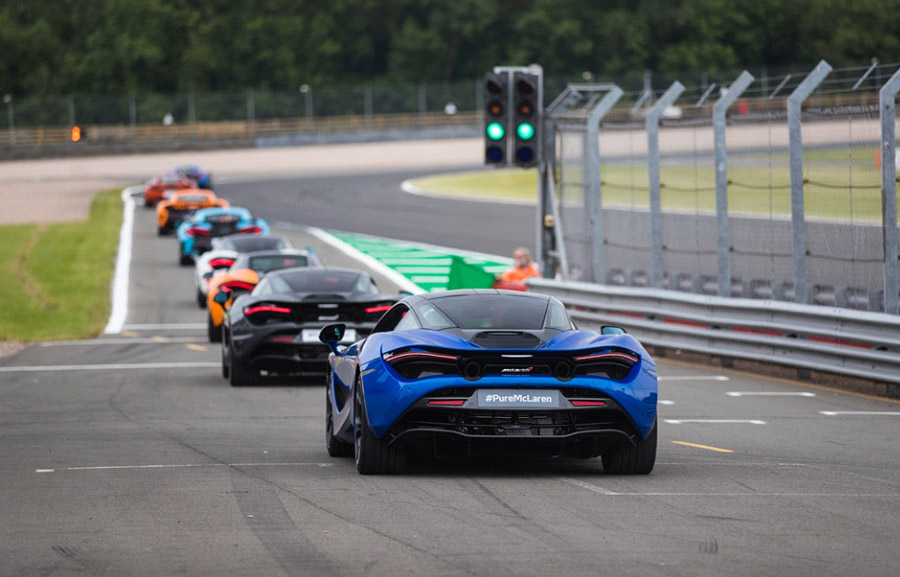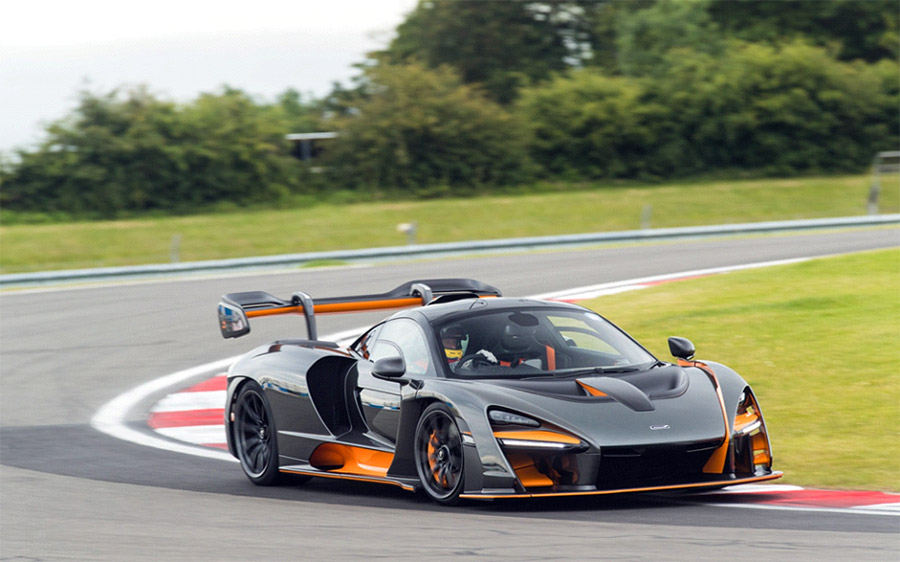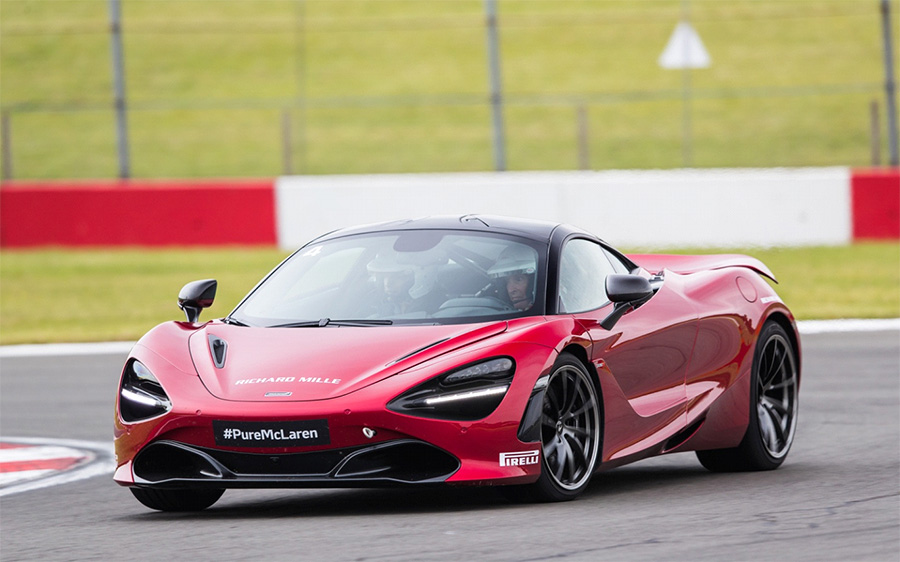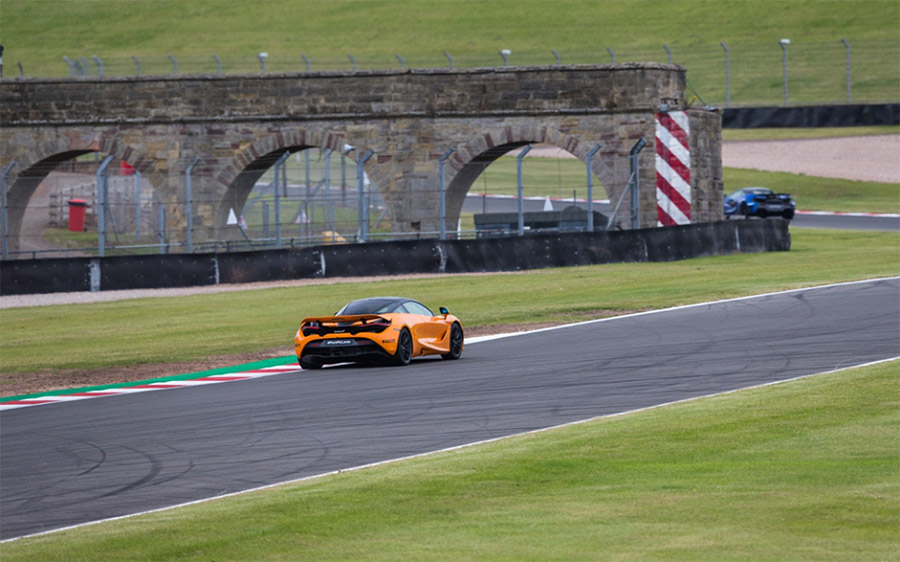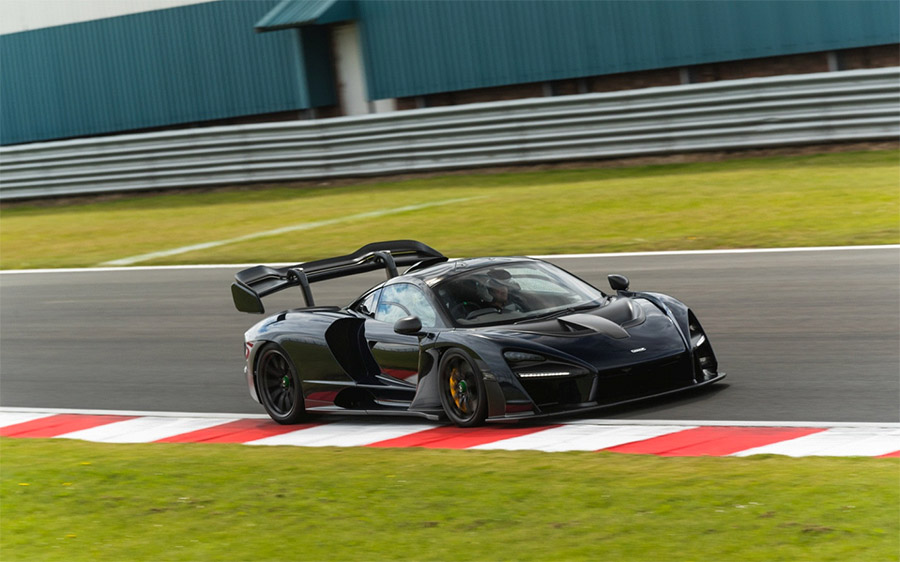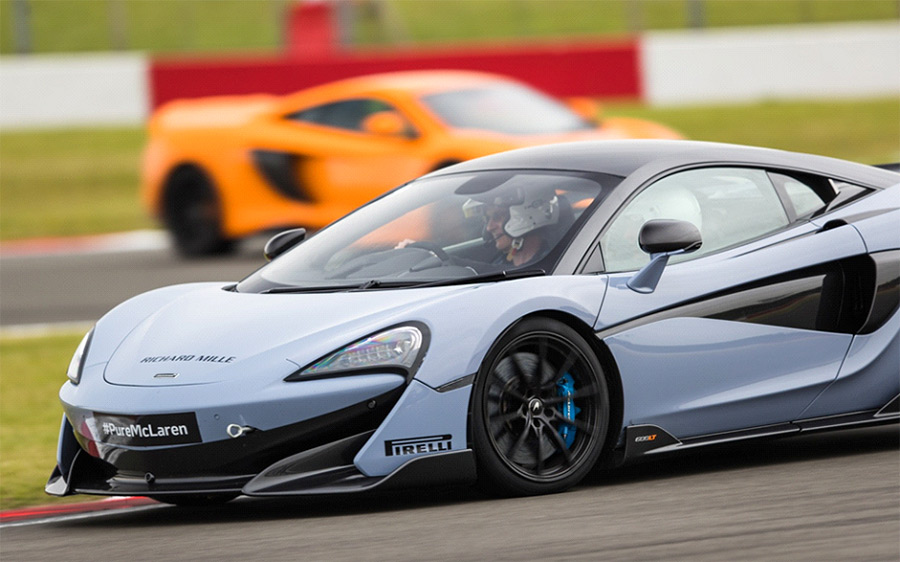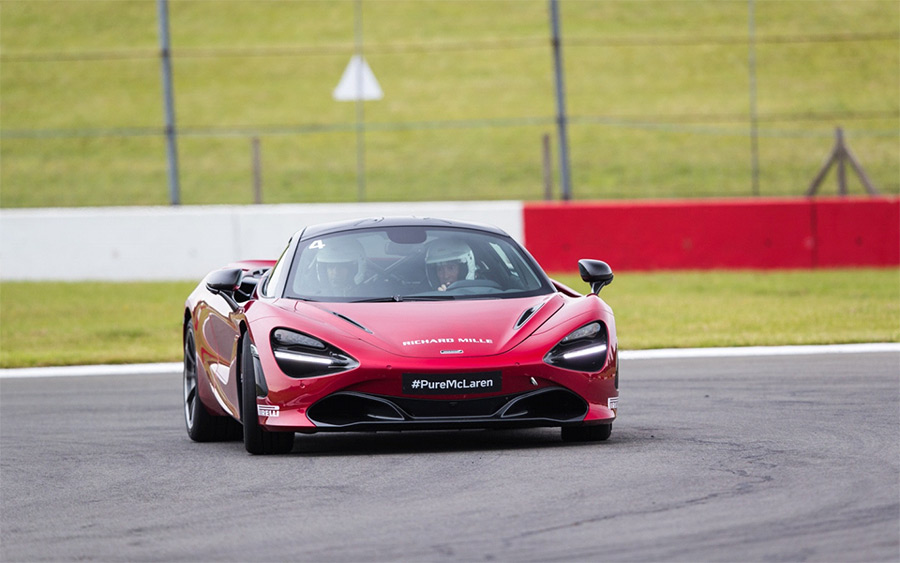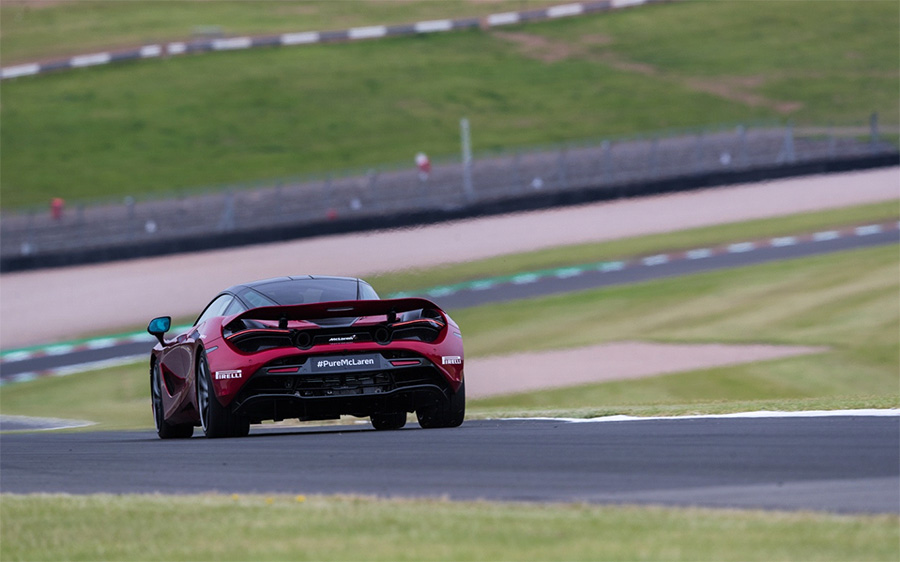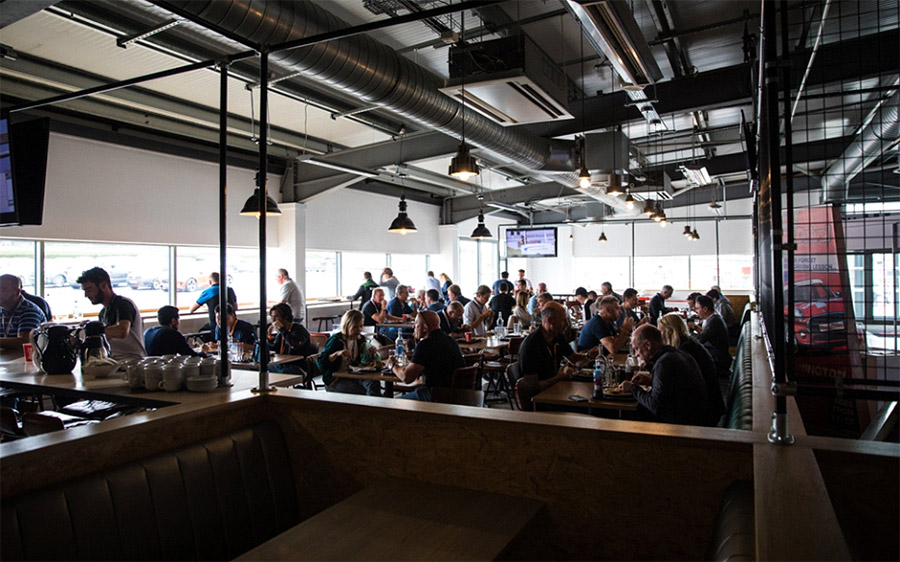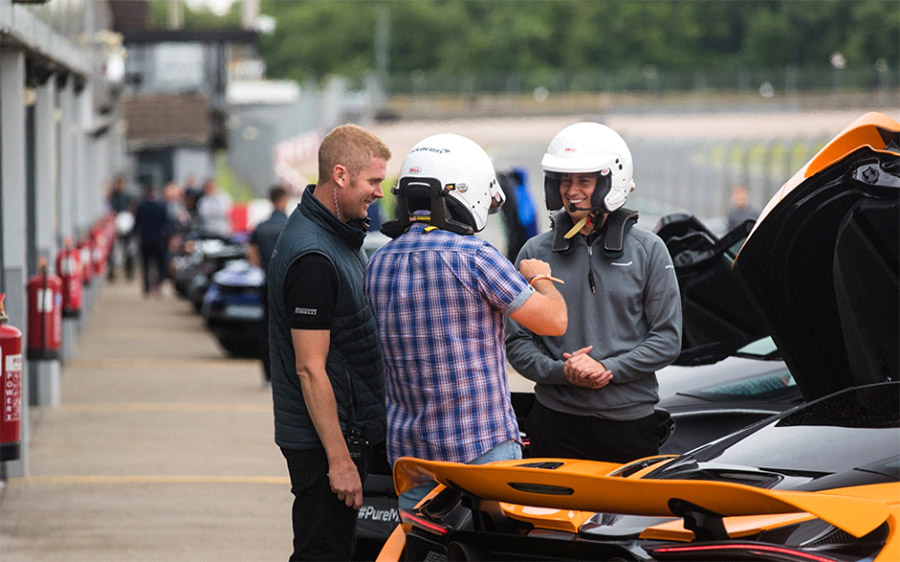Pure – unmixed with any other matter, free from harshness or roughness and being in tune, free from what weakens or pollutes, containing nothing which does not properly belong.
Start with a McLaren 720S, deploy into action through three rapid fire lapping sessions, add a hot lap courtesy of a Formula 2 champion, and spread it across the rolling countryside of the Donington Park Grand Prix circuit. Mix in a visit from a former Formula One pilot. Zest with a dozen other McLaren supercars circulating around the track at the same time. Envelop with McLaren hospitality.
That is the recipe for the essence of a concentrated McLaren experience – Pure McLaren.
As McLaren has grown, it has sought avenues to expand its reach and enhance the marque. It only makes sense that a company with racing and performance at its core looks to the race track in pursuit of that goal. A program called “Pure McLaren” is the result.
Naturally, the opportunity to spend a morning soaking in everything McLaren sounded like the perfect assignment for The Speed Journal and resident driver Jeff Francis. Arrangements made, Francis headed to Donington Park Grand Prix circuit, which is located in England, just over a 2-hour drive north of London.
Best known for decades of Formula One success, McLaren also made one of the most iconic road cars of all time. In the 1990s, McLaren designer Gordon Murray spearheaded a project to build a supercar labeled simply as “F1” – an uncompromised sportscar designed without regard to cost. A unique shape, a distinctive seating arrangement with the driver in the center of the car and two passengers on either side and slightly behind, a carbon fiber chassis, normally aspirated V-12 engine with gold foil wrapped around the engine bay as a heat shield, dihedral doors that pivoted to the sky, and other novelties made the F1 iconic. While not originally designed as a race car, racing versions of the F1 found success on the global stage at places like Le Mans. Only 106 examples were made in total, a number that includes prototypes and race cars.
The McLaren name appeared again in road car production with the Mercedes McLaren SLR which was launched in 2003. At the time, Mercedes supplied engines to the McLaren Formula One racing team, so a partnership to produce a performance road car was natural. Coupe and cabriolet versions of the SLR were produced for several years.
In 2009, however, McLaren moved to build the infrastructure necessary to produce its own road cars. It was a major departure, largely intended to diversify the business model away from being solely focused on Formula One racing. The goal was not a limited edition or low quantity one-off project, but a full-scale performance car manufacturer who handled all aspects of design and construction in house. Since releasing its first cars in 2011, McLaren has built a succession of sportscars, quickly establishing itself as a credible contender in a market that previously was dominated by marques from Germany and Italy.
Fast forward to 2019 and McLaren has established itself as a credible road car constructor. McLaren maintains a range of models and has consistently brought out new models with a high-tempo pace of development. Armed with a compelling assortment of sportscars, McLaren is expanding its reach. In an effort to engage with potential buyers, enthusiasts, and aspiring racers, McLaren created a driving experience program to acquaint guests to McLaren sportscars at world-class racing circuits and christened it “Pure McLaren.”
The Pure McLaren program typically takes over a track for four days and packs in a variety of programs. Tracks on the 2019 calendar include Hockenheim in Germany, Silverstone in England, and the Bahrain International Circuit. The program also includes stops in the United States at Thermal (near Palm Springs, California) and the Circuit of the Americas in Austin, Texas. For the true adventurers, Pure McLaren also has a program that runs on the ice near the Arctic Circle in Finland but that’s an entirely different – and chillier – program.
Depending on your budget and your interests, the Pure McLaren team organizes open lapping sessions for owners and aspiring owners, driving sessions for those looking for a personalized coaching and direction, or track time in a fully race-prepared McLaren track weapon. The Pure McLaren menu of options even includes a pathway for those targeting a racing license and competition in McLaren GT4 cars. Pure McLaren organizes a series of races for amateurs wanting to compete in a single-make series at tracks like Spa Francorchamps, Hockenheim, Silverstone and Bahrain. Set up as an “arrive and drive” model, McLaren takes care of all the logistics and drivers either enter their own 570S GT4 or rent one from McLaren.
Electing to pass on full bore racing competition or running with sled dogs in the Artic, The Speed Journal opted for a half-day experience as an introduction to the world of McLaren. After a morning welcome and breakfast, lead instructors including Rob Barff gave a safety briefing and outlined the morning’s schedule. Rob’s extensive racing experience in prototypes and sportscars certainly gave credibility to his guidance. In addition to logistics such as passing, he emphasized the ideal racing line as the key to unlocking the potential of car and driver.
Former Formula One pilot Bruno Senna also stopped by to share words of encouragement with the group. Bruno was at the circuit filming with McLaren, no doubt enjoying his own day at the Donington Park circuit. While Bruno Senna built his own racing career, he is also known as the nephew of Ayrton Senna who is a Formula One legend and made many of his epic drives in McLaren machinery.
With the initial briefings complete, the group moved to pit lane where a fleet of McLarens lined up side by side awaiting their drivers. Francis was directed to a black 720S – what a shape. The low-slung body showed off distinctive McLaren design elements with an aggressive nose, scoops along the flanks, a large rear spoiler, and aerodynamic tweaks everywhere. If there ever was a car that looked fast standing still, it is the 720S.
A carbon fiber chassis sits beneath the skin, a clear sign of supercar design that minimizes weight and maximizes stiffness and strength. The mid-engine configuration houses a twin-turbo 4.0-liter eight-cylinder monster that turns out 720PS (about 710 horsepower). Sticky low-profile Pirelli tires help put the power to the pavement. The design feature that stole the show, however, was the scissor doors that rotate to the sky. Climbing aboard though the majestic opening signaled that the experience once inside was going to be special. Like a geometric work of art, the twin-hinged dihedral doors swept forward and up to make an elegant and exotic portal of entrance and egress.
Luciano Bacheta served as the Speed Journal’s personal instructor for the morning track sessions. A prior Formula 2 champion and stunt driver for movies like Men in Black and Spiderman, Luciano provided calm and helpful advice throughout the morning. McLaren provided helmets included two-way radios to facilitate communication between driver and coach.
The first session allowed the driver to explore the car and learn the track. There was much to internalize quickly, as this was the driver’s first time behind the wheel of a 720S or making laps at Donington Park. The focus was on learning the line and gradually building speed. Acclimating to the brakes required a lap or two as Luciano assured that the car liked an aggressive touch on the binders. Standard bucket seats in the incredibly well-designed cockpit made for a perfect view as the amazing engine sound washed through the cabin. Stellar handling, futuristic design, soap opera good looks, and loads of power – a great introduction to the McLaren magic.
While getting accustomed to the 720S, several other McLarens circulated around the track. The usual road cars would be special enough, but a pair of “Senna” land missiles were on hand. Known only as the “Senna,” the car is the most intense, extreme and distilled track focused road car that McLaren currently makes. It is light, powerful, aggressive and makes no compromises to get as close to a race car as possible while retaining just enough road car touches to keep it street legal.
After a quick de-brief, the duo moved to a different 720S, but this one was outfitted with alcantera sport seats and racing harnesses. The standard safety belts were snug, but the racing equipment directly connected driver and car. Confidence grew with every braking zone, apex and launch further down the track. The pace picked up as the car began to show more and more of its racing pedigree. The Pirelli tires responded valiantly, struggling to hold on for grip as they were pushed to their limit.
The Donington Park Grand Prix circuit winds its way through twelve corners and several elevation changes. The course stretches for about 2.5 miles/4 kilometers in its current configuration. Originally built in 1933, the course takes its name from the nearby Donington Hall estate. The original race course utilized estate roads as its race track. The track hosted a number of races in the 1930s, including grand prix events with world-class cars. The track closed in 1939 due to World War II and the military used it during the war as a vehicle storage depot.
Fast forward to 1971 and Tom Wheatcroft revived the track with the initial intent of finding a place to exercise his private collection of grand prix cars. Wheatcroft, a successful businessman in building and construction, invested to make the track usable again and moved his collection of grand prix cars to a museum at the facility. The renovation was a success, improvements continued, and competitive racing resumed in 1977 for both cars and motorcycles.
A distinctive feature alongside the track is an ornamental arched bridge built in 1834 known as Starkey’s Bridge. Sufficiently narrow that it likely only served as a footpath or viaduct instead of a main thoroughfare, the stone bridge sits on driver’s left about halfway around the track just before the course turns uphill to the left. The history books have no definitive answer of who “Starkey” was or why there is a bridge named in his or her honor but is adds to the character of the grounds.
Donington Park hosted many sports car and touring car races over the years but may be best known for a single stop on the 1993 Formula One calendar. It may have only been for a year, but Ayrton Senna dominated a wet weather race in his red and white McLaren. Senna started in fourth, fell back briefly to fifth, and then charged to pass Karl Wendlinger, Michael Schumacher, Damon Hill and Alain Prost to take the lead before the end of the first lap. Because of that single race and that epic opening lap, Senna and McLaren will always have a place in Donington Park’s history books.
Another quick break, and the third session beckoned. Now armed with more knowledge and experience, Francis strung corners together consistently and found a rhythm. The 720S rewarded the effort with an amazing drive. The elevation changes and sweeping corners of the Donington Park course are more dramatic behind the wheel than when looking at a television screen or on-board video clip.
Now the instructor and pupil switched seats and Luciano showed his skills with a hot lap. Car and driver were well paired. Luciano worked the steering wheel with precision, gracefully dancing the 720s through the course. The lap delivered all the sensations of a raw race car at speed – corner rotation, acceleration, hard braking – all in the package of a sophisticated and refined modern exotic.
The morning went quickly with a streamlined program designed to deliver the maximum amount of distilled McLaren essence in a short period of time. A gourmet lunch capped the half-day event, providing a great opportunity to bench race with others in the midst of their own McLaren experiences.
The intensity of Pure McLaren was just enough to get a sense of the intangibles that make McLaren unique. Three morning sessions were not enough to extract the most out of the car or expertly learn the marvelous Donington Park circuit, but certainly were enough to get the brain thinking about how to wrangle more of both. For the time at an iconic British natural terrain road course, access to world class supercars and instructors, use of helmets, tires and fuel, and marvelous VIP hospitality, it is easy to see why customers find the Pure McLaren experience worth it’s affordable price tag. It is the ultimate “arrive and drive” way to check out a McLaren in its natural habitat.
Potential buyers might be curious, so a chance to log some miles around a track is a more enjoyable way to evaluate the car rather than looking at a static display in a showroom. Racing enthusiasts might look for a chance to log track time at iconic racing circuits behind the wheel of a supercar. McLaren fans might want to soak up the result of combining heritage and modern-day technology and design. Whatever the motivation, the result is Pure McLaren.
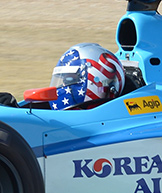
The Driver’s Series scours the world to find and explore compelling driving experiences for anyone with a driver’s license and passion for speed. We send our resident driver Jeff Francis to get behind the wheel and report back to Speed Journal readers to ride along virtually or become inspired to take on the driving experiences themselves. Are you involved with a driving experience that should be featured on The Speed Journal? Do you have a driving experience suggestion for The Speed Journal to investigate? Please contact us.

